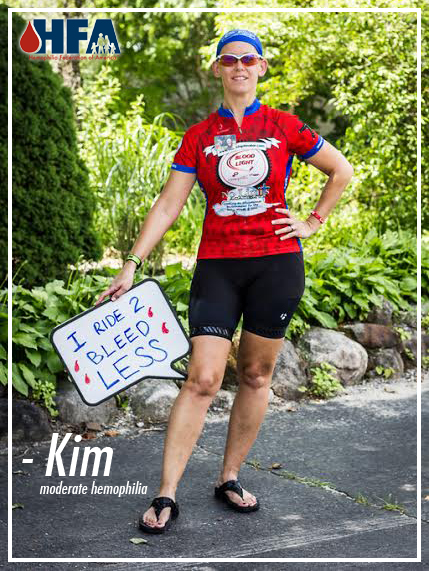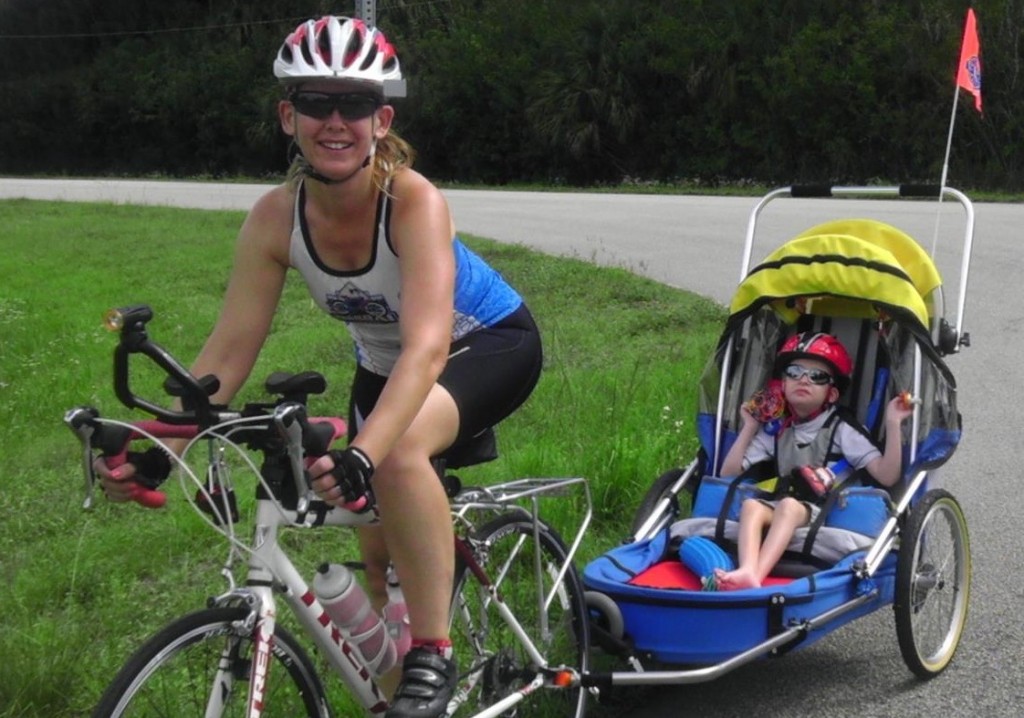It is important for individuals with bleeding disorders to participate in some form of physical activity. Being physically active helps to strengthen one’s muscles, bones and joints.  Having a strong healthy body can be a reduction in the number of bleeding episodes an individual might experience. Many in the bleeding disorders community are championing the effort to stay healthy and be physically active.
Kimberly is one of these champions. Diagnosed with hemophilia as a child, she has become an advocate for herself by becoming physically active and taking care of her body. She has learned that although not always easy, being physically active does make her feel better and bleed less. Kimberly will be participating in the Walt Disney World marathon in January, 2015. Amidst her busy training schedule and caring for her family, she took the time to share her thoughts about the importance of physical activity.
When did you discover that you had hemophilia?
KP:Â I was 11 years old when diagnosed. I hit my knee on the playground at school. It swelled up like a softball. The 1st thing doctors tried was aspiration. After that didn’t help, they put a cast on my leg, believing I had pulled a ligament or tendon. After the cast came off weeks later and my knee was still huge and painful, they scheduled orthoscopic surgery to see what was happening. The day prior, the pre-op blood tests revealed some clotting issues. I was then taken off the surgery schedule and sent to the hematology specialists at Mayo Clinic in Minnesota, where I was diagnosed.
How & when did you become physically active?
KP:Â I have always been active, but after being diagnosed, my doctor told me to stick with safe activities. So, I stopped playing volleyball and cheerleading and picked up golf. However, that wasn’t enough, and I gained weight slowly and not realizing it. It was about 5 years ago that my husband & I decided we needed to take better care of our bodies, so we joined a gym for our anniversary. Due to developing a target knee joint, I started out in the pool. Once I felt strong enough, I added cycling. After about a year of those, I wondered if it would be a good idea to try running, knowing how stressful it can be on the joints. I wore a knee brace at first while running, and would factor prior. The 1st 5K I signed up for didn’t work out, thanks to a knee bleed the day prior. This led to a bit of frustration, which luckily didn’t last. I soon became determined to prove that, when done in the appropriate manner, with a good support team of medical professionals, it is possible for a person with hemophilia to be a “runner” and be able to complete larger and larger distances.
Do you have a support system that encourages you to stay active? Who & How?
KP: Â My amazingly supportive husband and I take turns working out, as our 12 year old son has multiple special needs and needs round the clock care. We have a special needs jogger stroller that converts to a bike trailer, so we can include our son whenever possible. I have a great team of medical professionals to help guide me, including: hematologist, physical therapists (1 of which specializes in hemophilia), personal trainer, massage therapist.
When & how did you decide you wanted to run a marathon?
KP:Â After doing a few 5K’s, I decided to try a half marathon. I have completed 8 of those and after each one, I wonder, is it possible that I could survive a full? A little hesitantly, I decided to sign up and see what I can do. I am just a few short weeks away from the Disney World Marathon and still feeling strong! I feel like my knee has improved with the fitness plan that I am on.
How do you train for the marathon?
KP:Â I am following Jeff Galloway’s method of running with walking intervals. I am currently running 3 minutes and walking 1 minute, throughout each run. This helps to use different muscles and give the running muscles a break.
What, if any, special considerations do you take in your training due to your hemophilia?
KP:Â I must remember to factor before long runs. I pay very close attention to any warning signs that my body is giving me.
How has being physically active benefitted you?
KP:Â I feel like my joints, including my target knee, have improved with staying physically active. I have slept better.
What advice would you give to others in the bleeding disorders community about physical activity?
KP:Â Work with your physician and other medical specialists to come up with an activity level that is appropriate for you. Start slow and increase your strength gradually. Listen to your body. I am able to tell now fairly quickly when I start to overdo it. I must stop and take a break and make sure I am ready to continue. The key is to get back out there! In the beginning, that was much more difficult than now. I used to struggle, but now I am well aware of how much better I feel when I am keeping up with the program.
Do you have any plans or goals that you have set beyond the marathon?
KP:Â I would like to attempt a triathlon soon.
________________________
Kimberly Philo holds a BS degree in Health Services Administration from the University of Central Florida. She works as a Consumer Advocate for BioRx.




